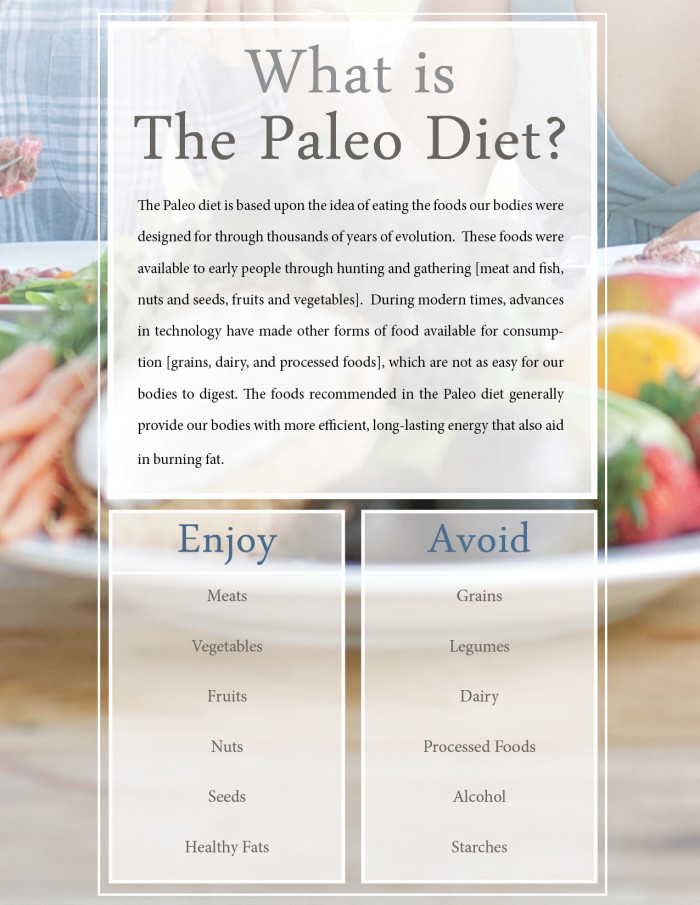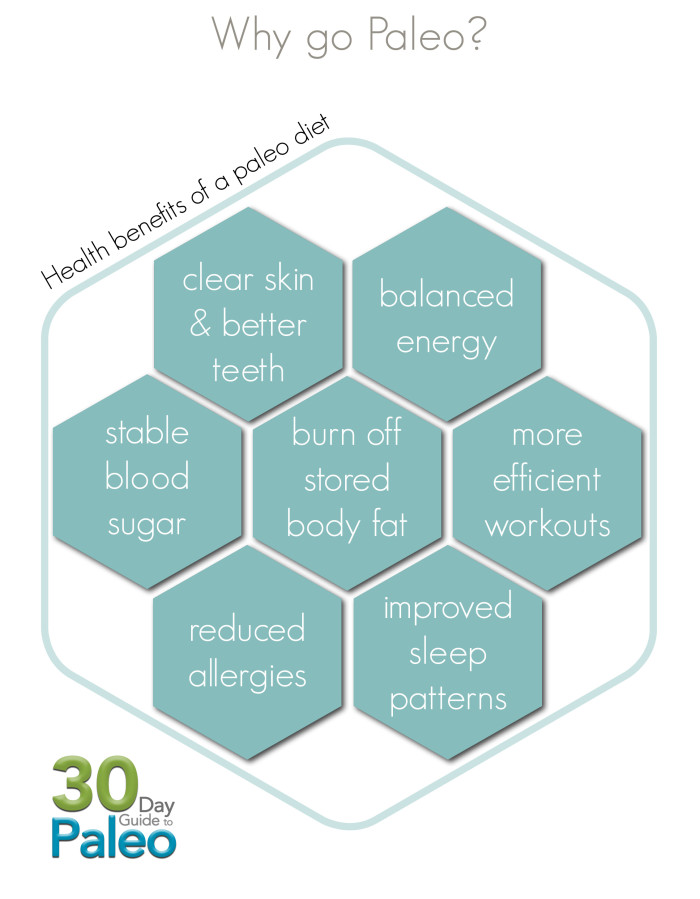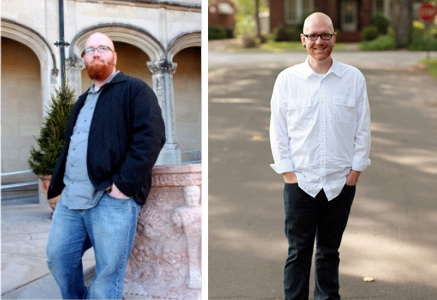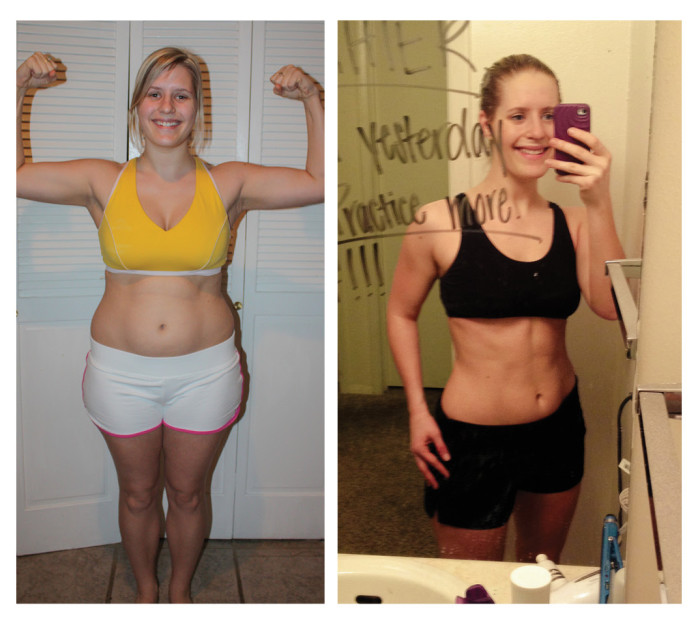What is The Paleo Diet®?
The Paleo diet is based upon the idea of eating the foods our bodies were designed for through thousands of years of evolution. These foods were available to early people through hunting and gathering [meat and fish, nuts and seeds, fruits and vegetables]. During modern times, advances in technology have made other forms of food available for consumption [grains, dairy, and processed foods], which are not as easy for our bodies to digest. The foods recommended in the Paleo diet generally provide our bodies with more efficient, long-lasting energy that also aid in burning fat. The Paleo Diet is considered to be optimal for digestion, blood sugar regulation, metabolism, and sleep.
The Paleo Diet® was developed by Dr. Loren Cordain.
What is the difference between Paleo and Primal?
‘Primal’ generally refers to Mark Sisson’s Primal Blueprint way of eating which is very similar to Paleo, but allows some leeway with certain types of dairy and has fewer restrictions on saturated fat intake. Throughout this book, we use “Paleo” and “Primal” as interchangeable terms. Generally speaking, the Paleo Diet is a high protein, moderate fat diet, and the Primal Blueprint is considered to be a high fat, moderate protein diet. Many people who follow this way of eating consider the terms to be one and the same. How ever you personally decide to “title” the ancestral diet that you abide by, both stem from the core principle of eating the foods our bodies were designed to eat: plants and animals.
What types of food are included in The Paleo diet®?
We eat a wide variety of meats, Poultry, Fish, Eggs, Colorful Fruits and Vegetables, Healthy fats from coconut, avocado, pastured fatty cuts of meat, grass fed butter, olive oil, and some nuts and seeds and herbs and spices. The options are endless, and our plates are always filled with something new and interesting to challenge our palates!
Check out hundreds of Paleo RECIPES and our FREE MEAL PLANNER
Which foods do you avoid?
All Grains, Pasteurized dairy, Soy, Legumes, Refined Sugar, and Alcohol
Enjoy |
Avoid |
|
Grains |
|
|
Legumes |
|
|
Dairy |
|
|
Processed Foods |
|
|
Alcohol |
|
|
Starches |
Why do you avoid healthy, whole grains?
Contrary to popular belief, whole grains are not so healthy to human beings. We simply have not adapted to be able to digest grains. Grains contain toxic anti-nutrients, lectins, gluten, and phytates, and we as human beings are not wired to be able to properly digest these anti-nutrients.To quote Mark Sisson: “Lectins are bad. They bind to insulin receptors, attack the stomach lining of insects, bind to human intestinal lining, and they seemingly cause leptin resistance. And leptin resistance predicts a “worsening of the features of the metabolic syndrome independently of obesity”. Fun stuff, huh? Gluten might be even worse. Gluten, found in wheat, rye, and barley, is a composite of the proteins gliadin and glutenin. Around 1% of the population are celiacs, people who are completely and utterly intolerant of any gluten. In celiacs, any gluten in the diet can be disastrous. We’re talking compromised calcium and vitamin D3 levels, hyperparathyroidism, bone defects. Really terrible stuff. And it gets worse: just because you’re not celiac doesn’t mean you aren’t susceptible to the ravages of gluten. As Stephan highlights, one study showed that 29% of asymptomatic (read: not celiac) people nonetheless tested positive for anti-gliadin IgA in their stool. Anti-gliadin IgA is an antibody produced by the gut, and it remains there until it’s dispatched to ward off gliadin – a primary component of gluten. Basically, the only reason anti-gliadin IgA ends up in your stool is because your body sensed an impending threat – gluten. If gluten poses no threat, the anti-gliadin IgA stays in your gut. And to think, most Americans eat this stuff on a daily basis.Phytates are a problem, too, because they make minerals bio-unavailable (so much for all those healthy vitamins and minerals we need from whole grains!), thus rendering null and void the last, remaining argument for cereal grain consumption.” Read more: http://www.marksdailyapple.com/why-grains-are-unhealthy/#ixzz1nc1L5iGT
GO PALEO … with our FREE PALEO Meal Planner
Paleo Success Stories that will blow your mind
-Other frequently asked questions-
Aren’t you worried about cholesterol?
- http://chriskresser.com/why-
you-should-eat-more-not-less- cholesterol - http://chriskresser.com/
heartdisease
What’s the deal with dairy?
Where do you get your calcium from?
Where can I find palm oil / coconut aminos / other obscure ingredients?



